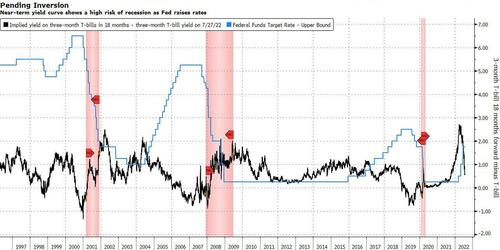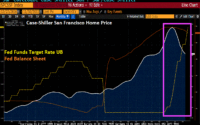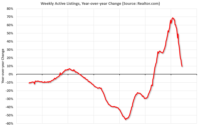Powell’s Preferred Economic Indicator Is An Achilles’ Heel
By Nour Al-Ali, Bloomberg Markets Live Commentator and Reporter
The shorter end of the US yield curve – the spread between the current three-month bill rate and the 18-month forwards which is Powell’s preferred indicator – is signalling an economic slowdown ahead. Those flare warnings mean the market is expecting a pivot from the Fed while trying to balance out inflation risks against recessionary ones.
Earlier in March, Fed Chair Powell said that he prefers to look at the short-end of the yield curve as a recession indicator. He pointed to the spread between 3-month, 18-month forward. The near-term forward spread, according to Powell then, is “what has 100% of the explanatory power of the yield curve. It make sense. Because if it’s inverted, that means the Fed’s going to cut, which means the economy is weak.”

At the time of his speaking, the spread in that slice of the curve was about 229 basis points, and it peaked shortly after. Since then, the spread has flattened at a stunning pace. Powell may now say that the spread’s predictability of recessions is a case of “reverse causality” as a research paper from the central bank showed a couple of years ago. The predictive aspect of this measure could simply be a reflection of the market’s expectations that a contraction would force the Fed to lower short-term rates, or in this case, stop raising them sooner.
In that sense, the measure has great value. If the market interprets an aggressively hawkish tone, participants may test Powell’s preferred tool and an inversion is possible.
It’s worth watching commentary from Powell to see if the bank has accepted that a hard-landing is potentially the only way out of inflation. But will the market and policymakers be on the same page?
Today’s decision will either set the two sides apart — with a possible market tantrum — or bring them closer together.
[ad_2]
Source link


